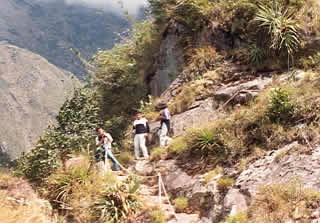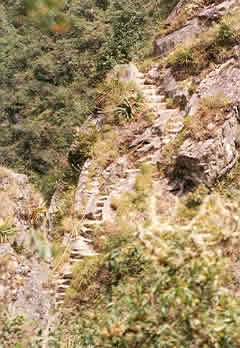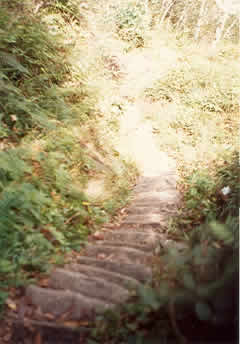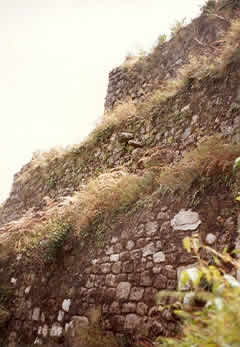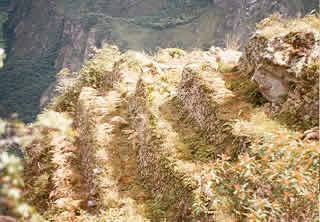HUAYNA PICCHU
The mountain Huayna Picchu (with an altitude of 2,667 msnm) comprises of Eastern spurs of the bulk of Salcantay, in Cusco, Peru. She is well-known mainly being the drop curtain of bottom of most of panoramic photographies of the ruins Incas of Machu Picchu. Nevertheless she herself lodges also important archaeological rest related to the famous complex Inca.
Way towards the summit.
A way that leaves from the North end of Machu Picchu crosses the narrow earth language that connects the mountains Machu and Huayna Picchu. Soon the way is branched off. The right branch ascends to the top. Its construction had to be arduous and in dangerous end: It is a way very raised, close, that includes several sections with perrons carved on the alive rock to the same edge in the vertical rock wall. In the end, and crowning the Huayna Picchu there are some smaller constructions, including a cover and a great wrought stone as a throne that is known like "Chair of the Inca". But most interesting it is the Vista here that is had of the ruins and the Urubamba to the bottom of the Tube, whose turbulent waters are heard still roar in a site so elevated. The snow-covered Salcantay (sacralizado by the Incas) is visible from like is it here also the peculiar alignment that exist between the Huayna Picchu, the summit of the Machu Picchu and the made snow-white mentioned one that according to Johann Renihard is one of the main reasons for which Machu Picchu was important in the days of Pachacutec (1438-1572).
The Temple of the Moon.
The other way goes towards the later part of the mountain and takes until a one of the most remarkable complexes of underground constructions of the region. One is several caves, some of which have been covered (on a scale greater than in the Mausoleo de Machu Picchu) with blocks of fine stonecutting which they have been carved to fit accurately with the irregular contours of the great rocky outcrops that serve to them as ceiling. The walls, of clearly ornamental character, include false covers and niches trapezoids of double and triple jamb. Although its specific function is not known, is clear that it is a set of constructions of elite by the effort that it demanded to do them. One thinks that it could have funeral uses and that all the tombs were sacked at some moment of the history of the region.
The name "Temple of the moon" is arbitrary and it does not have archaeological endorsement although it has become between the archaeologists and the tour guides popular. It reveals in any case the interest common to compare it in quality with other buildings Incas, like the "temple of the sun" of Machu Picchu.
To arrive until takes approximately one hour and average there walking from ciudadela from Machupicchu, from divides another way here costs down towards the Urubamba river.
Source: wikipedia.

